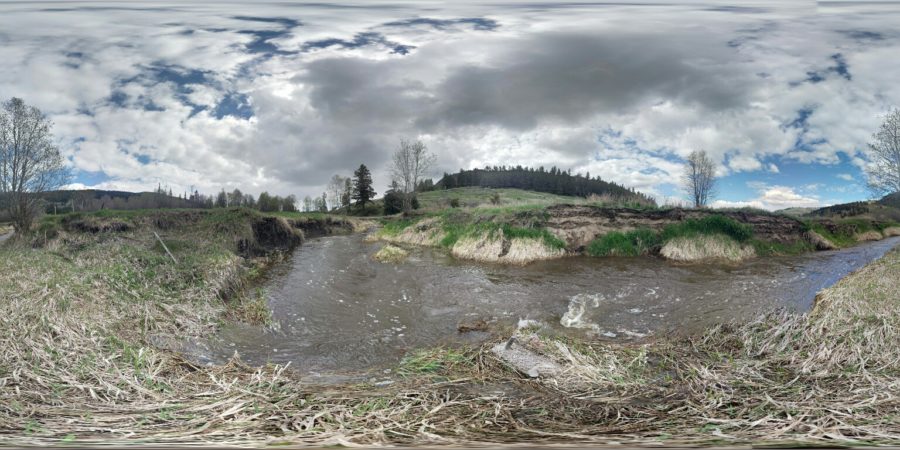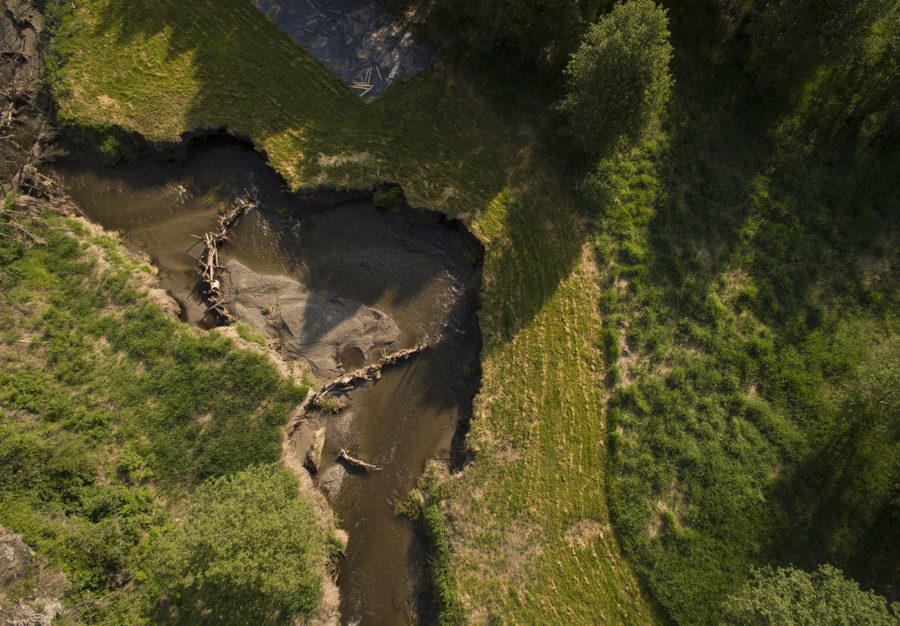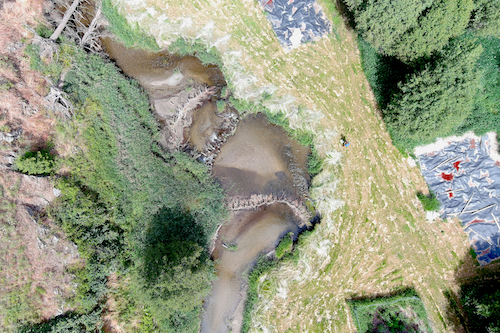Deer
Many White-tailed Deer and an occasional Mule Deer have been seen around the project site.
Many White-tailed Deer and an occasional Mule Deer have been seen around the project site.
Our most recently installed planting plot in May 2019 was a joint effort from multiple partners!


Ten planting plots on the upper floodplain (shown below in white and yellow) are being intensively managed for weed control and planted with native species appropriate for the drier soil hydrology. In addition, terraces, or inset floodplains within the incised channel (shown in green below) are being planted with native riparian species suited for the wetter soil conditions.
This riparian planting plot includes plants that tolerate a variety of hydrologic conditions, and the reed canarygrass and thistle are smothered with cardboard and bark.
These planting plots may someday provide willow and red osier dogwood for beaver, and spruce that can fall into the stream to improve structure and habitat in the channel.
Beaver Dam Analogue (BDA) #8 was installed up against the incised banks of Myers Creek. During high water of spring 2017, the stream pushed its force around the BDA and into the bank, widening and lengthening the channel as needed. This sediment was then carried downstream, where it was captured by other BDAs and settled on the streambed. As a result, the streambed is now closer to its floodplain!
The ultimate goal of this project is to reconnect the stream with its floodplain, and foster the ecological benefits associated with that connection. The following video is taken at the upstream end of the structures that our team installed in the summer of 2016.
Below you can see that large wood is changing the movement of the stream, causing it to spill out over its banks and inundate the floodplain in a broad area on both sides of the creek. This is the least incised portion of the project area, and thus the first to reconnect. It is very exciting to see this degree of success during the first high flows after in-stream construction.
Beaver Dam Analogue #1: Before, during and after construction
Beaver Dam Analogue #7: before, during, and after construction

The same view, 2 years later (2020).
